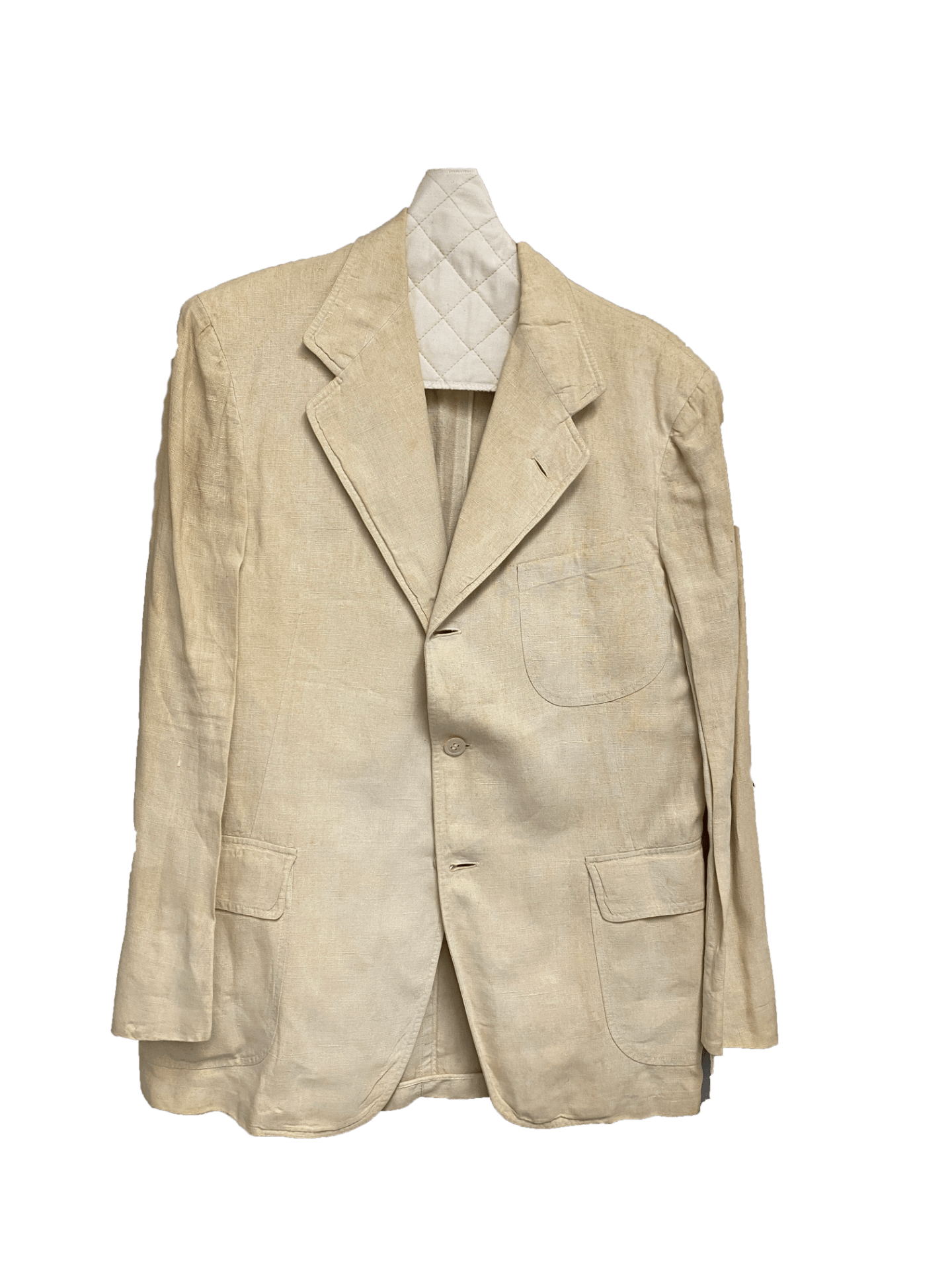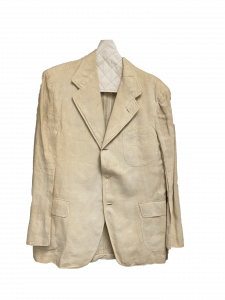Blog post by Mattie Nguyen
This online blog post features materials protected by the Fair Use guidelines of Section 107 of the US Copyright Act. All rights reserved to the copyright owners.
Weddings have long been days of tradition, ceremony, ritual, and rite of passage. Many mark their wedding day as one of the most important moments of their lives and inscribe special value in the objects pertaining to the event itself. To many, extravagance reflects this importance: extravagance in venue, extravagance in decoration, extravagance in dress. How then, does a period of restraint affect the joining of couples? How does it not?
One such event that spurred the restriction of many forms of consumption in the United States was World War II. Due to the mobilization of the nation’s industrial facilities to produce war materials and increased demand for specific resources, rationing was enacted to manage scarcities (Smithsonian, 2008). This government-controlled system of distribution affected commodities ranging from food products to rubber, metal, and cloth (Smithsonian, 2008). American society soon conformed to the structure of these scarcities, both under the guidance of policy, and the guidance of national comradery and solidarity with the war effort. As such, the extravagance of weddings previously mentioned was no longer relevant, rational, or fashionable.
On the summer day of July 27th, 1944, Elizabeth Brown married Henry P. Schmeck at Cornell University’s Sage Chapel in Ithaca, New York (Cornell Fashion + Textile Collection, 2021). In that same week in 1944, the War raged on in the European and Asian theaters (Smithsonian, 2008). How did these two events connect, and how was the wedding changed by the war? One place to look would be the clothes upon their backs.
On the day of his wedding, Henry P. Schmeck wore an unlined cream linen suit with notched lapels and a single breast. The suit was constructed of a lightweight, plain weave linen, and was likely sold as a ready-to-wear garment at the time of its purchase. Why might Schmeck have chosen this over a tuxedo? Maybe he felt more comfortable in a more casual suit than in a formal tuxedo. Or, perhaps he anticipated a hot July day, or a stuffy chapel and knew that linen would help him keep cool. So too, it could be that rationing from the war helped to dictate his choice of garb. In 1942, the American War Production Board passed regulation L-85, which served to affect the availability of fiber resources to the military (Smithsonian, 2008). To conserve and limit the consumption of fabric and materials such as wool and rayon, regulation L-85 sought to quell the desirability of garments (in addition to the simplification of designs). Garments were restricted to appear, cost, and consume an amount similar or identical to the year previous (Reddy, 2019). This lack of innovation was thought to discourage spending on new clothes, and instead, incite many to upcycle and mend their existing wardrobes (IMW, 2021).
For Henry P. Schmeck, the occasion of his wedding warranted, even in this time, a new suit. The suit he chose, the cream linen previously mentioned, reflected both conformity to the restrictions of regulation L-85 as well as the extravagance so associated with a nuptial event. One element of his suit, its color, marked a conformity: as cloth was rationed, fabric dyeing was discouraged for consumer use (Hostetter, 1943). As a result, lighter, more natural fabrics and tones were used in making clothes (Hostetter, 1943). The cream jacket reflects this trend for neutrals and reflects the natural color of flax. Additionally, lighter tones emote a greater sense of happiness, joy, and lightheartedness—valuable contributions to morale in a period as trying as a war.
The lighter color also communicates the joy of the occasion of Henry P. Schmeck’s wedding. Representative of purity, the color white is often seen worn by brides during the ceremony of their weddings. To be adopted by the groom in this instance, the traditional roles of gender and emotion as expressed through color are skewed and transformed. Because the color deviates from tradition, it creates a focal aspect to the suit itself. The suit is both an extension of the institution of marriage, as well as an expression of the wearer himself.
To complicate the play between conformity to occasion, context, and the succession beyond habit, the suit reflects further snubbing of aspects of the very explicit code of the L-85 ordinance: the code goes so far as to specifically prohibit the application of cuffs to suit pants, in the effort of conserving fabric (Hilke, 2011). So too does the code prohibit flapped pockets, both of which are present in Mr. Schmeck’s suit. These details are crucial elements of the suit’s design: the pockets balance the negative space of the suit’s broad chest through their creation of form and depth, and the cuffs function similarly in the space of the legs. The prevalence of these elements begs the question: did the function of this suit as a commemorative token of his marriage, in hand with the importance of these pieces as design efforts, warrant the flouncing of wartime policy and code?
We’ve proven time and time again that no expense need be spared when it comes to the joining of two families. Just this past year, a family friend of mine paid for live flowers to cover every visible surface at her event (no small cost, given the price of a single bouquet alone). It seems to be that even in the direst of times, rationing nuptials will find its match met.
References
Cornell Fashion + Textile Collection. “Cornell Fashion + Textile Collection.” 2008.14. – Wedding Dress, Two Pieces, Sheer Cotton Organdy w/Lace, 2021, cornellfashion.pastperfectonline.com/webobject/529C5B01-9CE0-48B2-8E2A-383530669075.
Hostetter, Helen P, editor. “Fashions in 1943.” Journal of Home Economics, vol. 35, no. 2-9, Feb. 1943, pp. 73–75., reader.library.cornell.edu/docviewer/digital?id=hearth4732504_35_002#page/2/mode/1up. Accessed Dec. 2021.
IWM. “How Clothes Rationing Affected Fashion in the Second World War.” Imperial War Museums, 2021, www.iwm.org.uk/history/how-clothes-rationing-affected-fashion-in-the-second-world-war.
Hilke, Jens. “Men’s Fashions.” Landscape Change Program, 2011, glcp.uvm.edu/landscape_new/dating/clothing_and_hair/1940s_clothing_men.php.
Reddy, Karina. “1940-1949.” Fashion History Timeline, 8 May 2019, fashionhistory.fitnyc.edu/1940-1949/.
Smithsonian. “World War II.” The Price of Freedom: Printable Exhibition, 2008, amhistory.si.edu/militaryhistory/printable/section.asp?id=9&sub=3.


